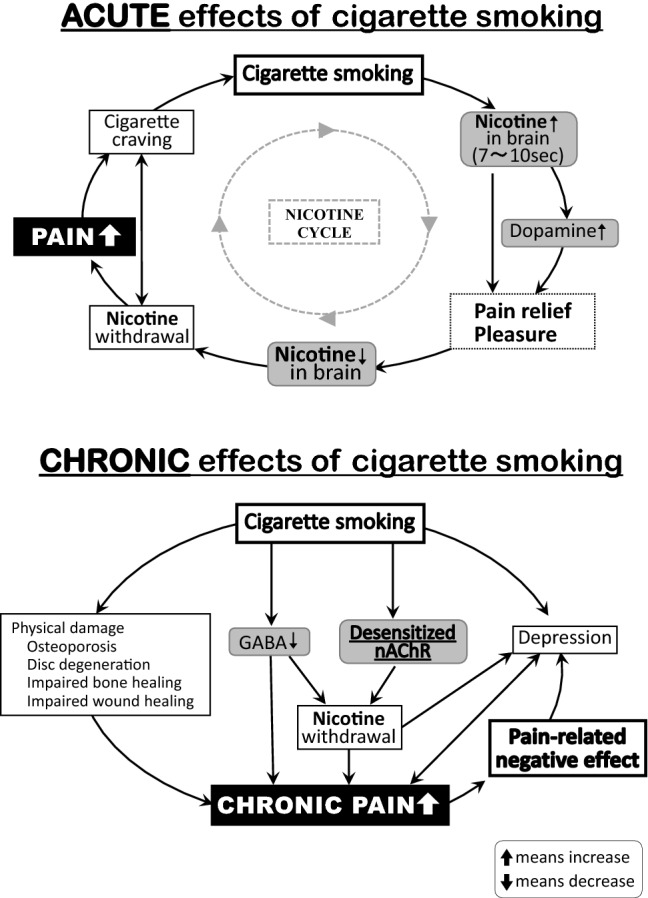WikiMSK:Featured Article/1 January 2023: Difference between revisions
From WikiMSK
(Created page with "{{FeaturedArticle |Date=2023-01-01 |Title=Smoking and Chronic Pain |Image=Smoking pathophysiology pain.jpg |Excerpt=he prevalence of smoking in those with chronic pain is up t...") |
No edit summary |
||
| Line 2: | Line 2: | ||
|Date=2023-01-01 | |Date=2023-01-01 | ||
|Title=Smoking and Chronic Pain | |Title=Smoking and Chronic Pain | ||
|Image=Smoking pathophysiology pain.jpg | |Image=File:Smoking pathophysiology pain.jpg | ||
|Excerpt=he prevalence of smoking in those with chronic pain is up to double that of the general population. In the short term smoking is an analgesic, however in the long-term it is deleterious for pain as it exacerbates nociceptive, neuropathic, and psychosocial pain. Smokers have higher pain intensities, number of painful areas, levels of disability, and opioid use to nonsmokers. There is a positive correlation even when controlling for confounding demographic, socioeconomic, and mood disorder factors. Many smokers identify coping with pain and anxiety as reasons for smoking. There is therefore a bidirectional relationship with smoking and pain. Pain increases the desire to smoke, and smoking increases pain. | |Excerpt=he prevalence of smoking in those with chronic pain is up to double that of the general population. In the short term smoking is an analgesic, however in the long-term it is deleterious for pain as it exacerbates nociceptive, neuropathic, and psychosocial pain. Smokers have higher pain intensities, number of painful areas, levels of disability, and opioid use to nonsmokers. There is a positive correlation even when controlling for confounding demographic, socioeconomic, and mood disorder factors. Many smokers identify coping with pain and anxiety as reasons for smoking. There is therefore a bidirectional relationship with smoking and pain. Pain increases the desire to smoke, and smoking increases pain. | ||
}} | }} | ||
Revision as of 12:39, 4 December 2022
Featured Wiki Article for 1 January 2023


